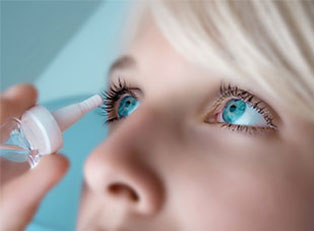What Causes Conjunctivitis?
Causes of conjunctivitis or pink eye include:
- Viruses
- Bacteria
- Allergies
- A chemical splash in the eye
- A foreign object in the eye
- In newborns, a blocked tear duct
Viral and bacterial conjunctivitis
Viral conjunctivitis and bacterial conjunctivitis may affect one or both eyes. Viral conjunctivitis usually produces a watery discharge. Bacterial conjunctivitis often produces a thicker, yellow-green discharge. Both viral and bacterial conjunctivitis can be associated with colds or with symptoms of a respiratory infection, such as a sore throat.
Both viral and bacterial types are very contagious. They are spread through direct or indirect contact with the eye secretions of someone who's infected.
Adults and children alike can develop both of these types of pink eye. However, bacterial conjunctivitis is more common in children than it is in adults.
Allergic conjunctivitis
Allergic conjunctivitis affects both eyes and is a response to an allergy-causing substance such as pollen. In response to allergens, your body produces an antibody called immunoglobulin E (IgE). This antibody triggers special cells called mast cells in the mucous lining of your eyes and airways to release inflammatory substances, including histamines. Your body's release of histamine can produce a number of allergy signs and symptoms, including red or pink eyes.
If you have allergic conjunctivitis, you may experience intense itching, tearing and inflammation of the eyes — as well as sneezing and watery nasal discharge. Most allergic conjunctivitis can be controlled with allergy eyedrops.
Conjunctivitis resulting from irritation
Irritation from a chemical splash or foreign object in your eye is also associated with conjunctivitis. Sometimes flushing and cleaning the eye to rid it of the chemical or object causes redness and irritation. Signs and symptoms, which may include watery eyes and a mucous discharge, usually clear up on their own within about a day.



